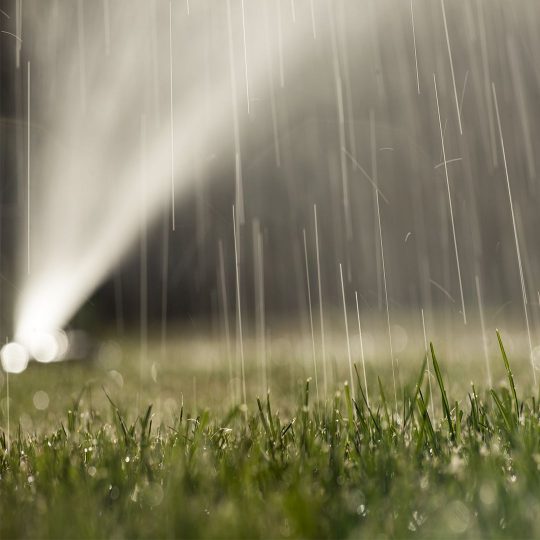How Much to Water Your Lawn
Without Drowning in Water Bills
Posted
August 2, 2018

The summer months can be brutal for a lawn. The hot sun and drought conditions can leave grass parched, but then a summer downpour comes along to quench its thirst. But is it enough? Knowing how much to water your lawn is key to its health and keeping your water bill low. Follow these tips to help keep everyone happy and healthy.
How Much to Water Your Lawn
On average, your lawn needs about an inch of water per week, year-round, to feel quenched. Depending on your grass, it may need more in the summer months if it’s not as resistant to drought. A yard that’s too dry going into the dormant winter months will also be stressed during the season, meaning it may not bounce back as easy come spring.
Use a rain gauge to see how much water you get in a week. If you collect an inch or more, congrats! You don’t need to water. If it’s less than that, break out the hose or sprinkler. The time it takes to reach an inch will depend on the watering method, grass, soil, and weather conditions. You can estimate how long to keep a sprinkler running by putting a small, inch tall can in its spray path, and turn the sprinkler off once the can is full. With this information you can set a sprinkler schedule to get the right amount of water throughout the week.
Remember to keep in mind the best time to water your lawn—usually in the morning—in order to get the most out of the process.
Signs You Need More Water
Brown, dry spots on your lawn could be a sign that it needs more water. Try adjusting your watering schedule to increase the amount. If this doesn’t seem to work, check for other signs of lawn disease.
Different soil types need different amounts of water. More sandy soil won’t hold moisture as well as a clay-based variety. Like mud, clay holds moisture better, but water doesn’t penetrate as fast. You can tell what your dominant type of soil is by squeezing a moist handful. Clay will form a tighter ball than sand. Sand will stick together when squeezed, but crumble easily. To gauge if your type of soil is getting enough water, try to push a six inch screwdriver through the ground. If it goes down easy, it’s well watered. If not, water more.
Signs You’ve Used Too Much Water
Whether watering with a hose or sprinkler, you don’t want to get to the point of seeing water running down the street or sidewalk. This either means you’re watering too much, or the soil is too compact to absorb it fast enough. Try aerating your lawn to see if it helps the problem. If that doesn’t work, adjust your watering schedule for shorter, more frequent showers to allow the water to absorb.
For more tips on the how much to water your lawn, contact the specialists at Cardinal Lawns.
Special Offer for New Customers
Two Free Lawn Care Treatments
Hurry! Offer Expires April 30, 2025